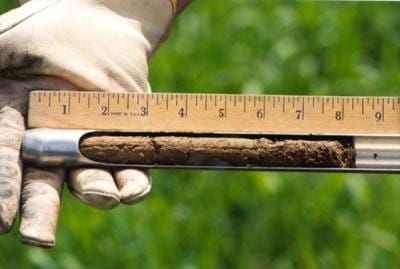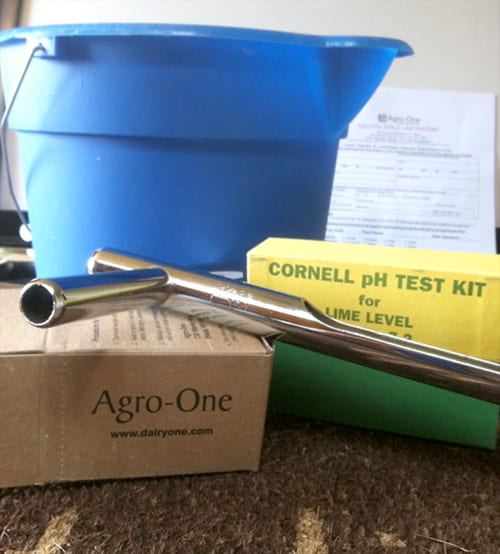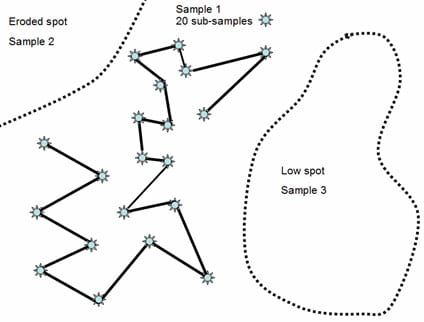Why soil test?

Soil tests evaluate the nutrient supplying power of the soil and report phosphorus (P), potassium (K), calcium (Ca), Magnesium (Mg), minor nutrients, percent organic matter and the soluble salt level and soil pH. Soil test results provide the foundation information for building a sports turf fertilizer program and can also be used to diagnose problems related to nutrients and soil pH.
With soil test results you can:
- Adjust soil pH
- Determine amount of required fertilizer
- Avoid over/under fertilization
- Utilize an environmental protection tool
Select a lab to work with
Soil test results may from lab to lab vary because several methods can be used to extract the nutrients from the soil sample when estimating the nutrient supplying power. Although the levels may be different, the interpretation (very low, low, medium, high) should be fairly consistent between reputable labs.
Select a lab service that uses soil test calibration data from New York State soils to interpret the results.
Cornell University works with Agro-One, which is a department within Dairy One, to perform the analytical work while the recommendations are provided by Cornell University from research based information conducted by Cornell’s turf team.
Recommended soil test packages

For mineral soils (non-sandy) request the 855 Standard soil test package which will provide soil pH, lime requirement, percent organic matter, and phosphorus, potassium, calcium, magnesium aluminum, iron, zinc and manganese levels and recommendations.
For sand-based fields request the following to be tested: soil pH, phosphorus, organic matter and cation exchange capacity (CEC). The standard tests are not as useful when testing sand-based soils. The CEC measures the capacity to hold nutrients potentially available for plant uptake and provides more useful information.
When do I begin soil testing?
Soils can be sampled any time the ground is not frozen. Allow time to take and submit samples, receive the results and order the fertilizer. Some managers like to sample and have soils tested in the fall or early spring to plan for the next year’s fertilization program and budget.
A soil test should be conducted when establishing a new site and every 2-3 years on established sites. To obtain meaningful and useful test results, sample soil correctly, at the same time each year and maintain fertilizer records.
How and where do I soil test?

Take a good soil representative sample
Always follow the soil sampling instructions provided by the soil testing lab you use.
You can use a soil probe or towel to take a sample
Sources of Soil Test Probes:
Be sure to follow these soil sampling steps:
- Always take samples at a consistent depth, preferably 4”.
- Take about 10-20 cores from a uniform area, similarly managed, using a zig zag pattern to ensure that overall field conditions and variability are taken into account.
- Remove live plant material or thatch
- Mix the soil in a clean plastic container to provide about 1 cup of a composite sample
- Air dry the sample before sending it to the lab if possible
- Complete and include the submission Form T (for commercial turf samples).
When you complete the form be sure to include:
- crop code (ATF for athletic fields submitted to the Agro One lab)
- soil name (Required for Agro-One nutrient guidelines in NYS. See links below to find your soil name.)
- soil texture and drainage
- tests requested
Soil test name and description can be found using several resources:
- NRCS Web Soil Survey – Uses mapping tools to identify soil series.
- Official Soil Series Descriptions (OSD)
- SoilWeb for the iPhone – iPhone app from California Soil Resource Lab. Also available for Android.
Keep records on file
Soil test results should always be kept on file and used to adjust fertilizer programs over time.


